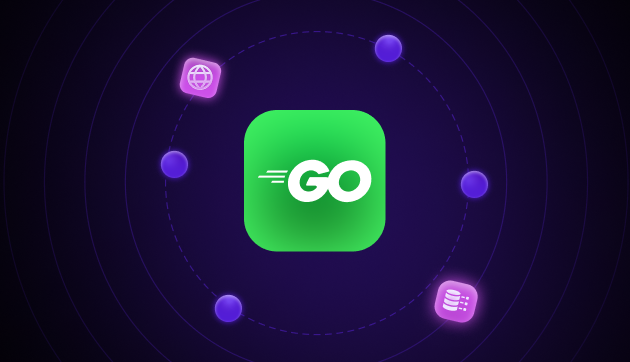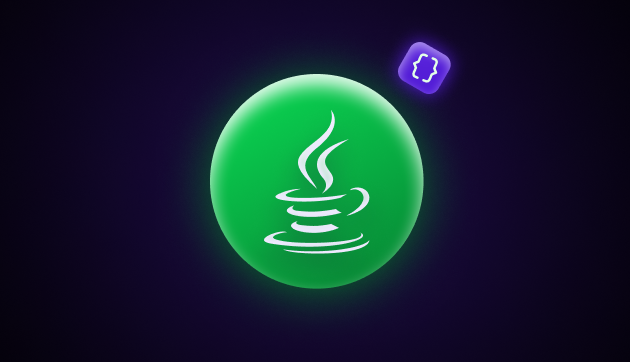
Popular React Native App Examples in 2025
Apr 08, 2025 5 Min Read 3908 Views
(Last Updated)
In mobile app development, React Native stands out as an important framework that empowers developers to create dynamic, cross-platform applications with ease. React Native continues to gain momentum, with an increasing number of companies using its capabilities to build innovative and user-friendly apps.
In this blog, we’ll explore some of the most popular React Native app examples in 2025, showing how this framework is being utilized across various industries to deliver exceptional user experiences. From social media giants to e-commerce platforms and entertainment apps, these examples highlight the versatility and impact of React Native in shaping the future of mobile technology.
Let’s explore these React Native apps that are setting the standard for excellence in 2025.
Table of contents
- What is React Native?
- Popular React Native App Examples in 2025
- Social Media Apps
- E-commerce Apps
- Entertainment Apps
- Travel Apps
- Lifestyle and Wellness
- Conclusion
- FAQs
- What are the advantages of using React Native for mobile app development in 2025?
- How does React Native handle performance and optimization concerns in 2025?
- What are some notable examples of successful React Native apps in 2025?
What is React Native?
React Native is an open-source framework developed by Facebook for building mobile applications using JavaScript and React. It allows developers to create cross-platform apps for iOS and Android platforms using a single codebase, reducing development time and effort. React Native uses native components instead of web components, resulting in apps that look and feel like native applications.
It enables developers to use their existing knowledge of React and JavaScript to build high-performance mobile apps with a smooth user experience.
- Cross-Platform Compatibility: With React Native, you can write code once and deploy it across multiple platforms, saving time and resources.
- Native Performance: Unlike hybrid frameworks, React Native utilizes native components, resulting in apps that perform as well as those built using native languages.
- Fast Development: React Native’s hot reloading feature allows developers to see changes in real time, speeding up the development process.
- Large Community and Ecosystem: With a vast community of developers and a rich ecosystem of libraries and tools, React Native offers unparalleled support and resources.
- Backed by Facebook: Developed and maintained by Facebook, React Native benefits from continuous updates and improvements, ensuring it stays at the forefront of mobile app development.
React Native offers a compelling solution for building high-quality mobile apps that run smoothly across different platforms. With its cross-platform compatibility, native performance, and robust ecosystem, React Native continues to be a top choice for mobile app development in today’s fast-paced digital landscape.
Also Read: Ionic vs React Native: Best Mobile App Framework
Ready to master React JS? Join GUVI’s React JS course today for hands-on learning and build your own dynamic web applications! Enroll now and unlock your potential in web development.
Having covered the basics of React Native, let’s now explore some notable applications that exemplify its versatility and impact in 2025.
Popular React Native App Examples in 2025
Let’s take a closer look at some of the most prominent React Native app examples across different industries.
1. Social Media Apps
In the fast-paced world of social media, delivering a seamless user experience across multiple platforms is important for engaging users effectively. Here are two prominent examples of social media apps utilizing React Native:
a. Facebook Ads Manager
As the first full React Native cross-platform app developed by Facebook, the Facebook Ads Manager offers advertisers a clean interface and intuitive user experience. Its adoption of React Native enables efficient management of ads across iOS and Android platforms, ensuring advertisers can easily reach their target audience with consistent messaging.
Key Features
- Clean and intuitive interface for efficient ad management.
- Cross-platform compatibility for seamless user experience on iOS and Android.
- Real-time performance tracking and analytics.
- Customizable ad creation tools to suit varying campaign needs.
- Integration with Facebook’s comprehensive advertising ecosystem for maximum reach and impact.

b. Instagram
Using React Native for easy maintenance across platforms, Instagram ensures a smooth and consistent user experience for its millions of users. By transitioning to React Native, Instagram benefits from a simplified UI design that enhances user engagement and interaction, making it one of the most popular social media platforms worldwide.
Key Features
- Streamlined user interface prioritizing visual content.
- Smooth navigation and intuitive gestures for effortless browsing.
- Robust editing tools for enhancing photos and videos.
- Interactive features such as stories, reels, and live streaming.
- Personalized recommendations and discovery options to explore new content.

Also Read: How to Render an Array of Objects in React? [in 3 easy steps]
2. E-commerce Apps
In the competitive landscape of e-commerce, providing a unified user experience across different operating systems is essential for attracting and retaining customers. Here are two e-commerce giants utilizing React Native to achieve this:
a. Amazon
With React Native, Amazon maintains a cohesive user experience across iOS and Android platforms, ensuring customers can shop seamlessly regardless of their device. By using React Native’s capabilities, Amazon delivers consistent updates and features, enhancing the overall shopping experience for millions of users worldwide.
Key Features
- Unified shopping cart and checkout process for easy purchasing.
- Personalized product recommendations based on browsing and purchase history.
- Secure payment options, including one-click purchasing and digital wallets.
- Integration with Amazon Prime for fast and convenient delivery options.
- Enhanced search functionality with voice search and image recognition capabilities.

b. Flipkart
As India’s leading e-commerce platform, Flipkart benefits from React Native’s shared codebase to deliver consistent features and updates to both iOS and Android users. React Native enables Flipkart to streamline development processes, ensuring a seamless shopping experience for its vast customer base.
Key Features
- Wide range of products across categories, including electronics, fashion, and home goods.
- Daily deals and discounts to incentivize purchases.
- Interactive shopping experience with product videos and reviews.
- Multiple payment options, including cash on delivery and EMI.
- Seamless order tracking and customer support for a hassle-free shopping experience.

Also Read: Use ReactJS to Fetch and Display Data from API – 5 Simple Steps
3. Entertainment Apps
In the dynamic world of entertainment, apps require simultaneous updates across platforms to stay competitive and maintain user engagement. Here are two entertainment apps using React Native for efficient development and maintenance:
a. Bloomberg
Adopting React Native allows Bloomberg to efficiently update its app across iOS and Android platforms, improving development efficiency and reducing maintenance overhead. By using React Native, Bloomberg ensures a responsive and engaging user experience, enhancing its position as a leading provider of financial news and information.
Key Features
- Comprehensive coverage of global financial markets, news, and analysis.
- Customizable watchlists and alerts for personalized updates.
- Live streaming of Bloomberg TV for real-time market insights.
- Interactive charts and data visualization tools for in-depth analysis.
- Seamless integration with Bloomberg’s ecosystem of financial products and services.

b. Netflix
With React Native, Netflix delivers a responsive and engaging user interface that enhances the streaming experience for users worldwide. React Native enables Netflix to efficiently develop and maintain its app across multiple platforms, ensuring consistent performance and user satisfaction.
Key Features
- A vast library of movies, TV shows, and original content for all interests.
- Personalized recommendations and curated playlists for tailored viewing experiences.
- Offline downloads for watching content on the go.
- Continuous playback across devices for uninterrupted viewing.
- Accessibility features such as closed captions and audio descriptions for inclusive viewing.

Also Read: How to Install React.js on Windows: A Complete Guide
4. Travel Apps
In the travel industry, providing a seamless experience for users on various devices is essential for a successful business. Here are two travel apps utilizing React Native to achieve this:
a. Airbnb
With a dedicated team working on React technology, Airbnb uses React Native to develop reusable code and ensure easy maintenance across platforms. By adopting React Native, Airbnb delivers a consistent and user-friendly experience for travelers booking accommodations worldwide.
Key Features
- A diverse selection of accommodations, including homes, apartments, and unique stays.
- Detailed listings with photos, descriptions, and reviews from previous guests.
- Secure booking and payment process with built-in protection for guests and hosts.
- Messaging system for communication between guests and hosts.
- Local experiences and recommendations for exploring destinations like a local.

b. Uber
While React Native covers a small part of the app, Uber utilizes it to enhance UI and UX elements, contributing to efficient cross-platform development. React Native enables Uber to deliver a smoother user experience for millions of users worldwide, ensuring seamless ridesharing experiences on both iOS and Android devices.
Key Features
- Seamless ride booking and tracking for convenient transportation.
- Multiple ride options, including UberX, Uber Black, and Uber Pool.
- Estimated fare calculation and upfront pricing for transparency.
- Safety features such as real-time trip tracking and emergency assistance.
- Integration with local transit options for seamless multimodal transportation.

Also Read: useState() Hook in React for Beginners | React Hooks
5. Lifestyle and Wellness
In today’s fast-paced world, prioritizing health and wellness has become increasingly important. React Native empowers developers to create intuitive and seamless mobile applications that cater to users’ lifestyle and wellness needs. Here are two exemplary apps in the lifestyle and wellness category using React Native to enhance user experiences:
1. Gyroscope
Gyroscope uses React Native to offer users a comprehensive health and wellness experience, integrating seamlessly with HealthKit. Users can effortlessly track their daily activities, including steps, heart rate, meditation, and more. With simple and informative data displays, Gyroscope empowers users to make informed decisions about their health and lifestyle.
Key Features
- Intuitive interface for tracking health metrics and activities.
- Daily, weekly, and monthly reports to monitor progress and set goals.
- Integration with HealthKit for comprehensive health data synchronization.
- Customizable reminders and notifications to stay on track with fitness goals.
- Secure data storage and privacy controls for user peace of mind.

2. Tesla
Tesla’s React Native-powered mobile app redefines the driving experience, offering users remote control over their electric vehicles, real-time battery monitoring, climate adjustments, and OTA updates. With React Native’s cross-platform capabilities, Tesla ensures a consistent and responsive user interface on both iOS and Android, streamlining development and maintenance efforts for a seamless driving experience.
Key Features
- Remote control functionalities for electric vehicles, including climate control and vehicle location tracking.
- Real-time monitoring of battery status and charging progress.
- Integration with Tesla’s over-the-air update system for seamless software updates and feature enhancements.
- Secure authentication and access controls to protect user data and vehicle control.
- Customizable notifications and alerts for vehicle status updates and maintenance reminders.

These popular React Native app examples show the framework’s versatility and impact across various industries. From streamlining development processes to delivering exceptional user experiences, React Native continues to revolutionize app development in 2025 and beyond.
As businesses and developers embrace the advantages of cross-platform development, React Native remains a top choice for building high-quality mobile applications.
Must Explore: 10 Best React Project Ideas for Developers [with Source Code]
Ready to master Full Stack Development? Want to create dynamic web applications from scratch? Look no further! GUVI’s Full Stack Development course is your ticket to expertise. Are you ready to start this exciting journey? Enroll now and let’s make your coding dreams a reality!
Conclusion
As technology continues to advance, React Native remains at the forefront of innovation, enabling companies to stay agile, responsive, and competitive in an increasingly mobile-centric world. With its ability to streamline development processes, reduce maintenance overhead, and deliver consistent user experiences across platforms, React Native has undoubtedly reshaped the landscape of mobile app development for years to come.
Also Read: Top ReactJS Interview Questions and Answers Of 2025! [Part-1]/[Part-2]
FAQs
React Native remains a popular choice for mobile app development due to several advantages. These include faster development cycles, as developers can write code once and deploy it on multiple platforms.
Additionally, React Native allows for a high degree of code reusability, resulting in cost savings and faster time to market.
In 2025, React Native will continue to address performance and optimization concerns through ongoing improvements and updates. The React Native team and the community actively work on enhancing the framework’s performance, reducing memory usage, and optimizing rendering processes.
Several notable apps continue to showcase the capabilities of React Native in 2025. Examples include social media platforms like Instagram and Facebook, which use React Native for key features of their mobile apps.
E-commerce giants such as Amazon and Flipkart also utilize React Native to provide seamless shopping experiences to their customers.
























![What is TypeScript? A Beginner's Guide [2025] 14 typescript](https://www.guvi.in/blog/wp-content/uploads/2025/05/What-is-TypeScript_-A-Beginners-Guide.png)



![What is ReactJS? A Beginner's Guide [2025] 17 what is reactjs](https://www.guvi.in/blog/wp-content/uploads/2025/04/What-is-ReactJS_-A-Beginners-Guide.png)



Did you enjoy this article?